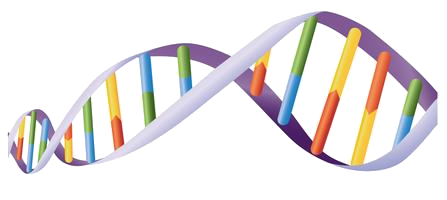
漢德百科全書 | 汉德百科全书
 科学技术
科学技术


希尔伯特问题(德语:Hilbertsche Probleme)是德国数学家大卫·希尔伯特于1900年在巴黎举行的第二届国际数学家大会上作了题为《数学问题》的演讲,所提出23道最重要的数学问题。希尔伯特问题对推动20世纪数学的发展起了积极的推动作用。在许多数学家努力下,希尔伯特问题中的大多数在20世纪中得到了解决。
希尔伯特问题中未能包括拓扑学、微分几何等领域,除数学物理外很少涉及应用数学,更不曾预料到电脑的发展将对数学产生重大影响。20世纪数学的发展实际上远远超出了希尔伯特所预示的范围。
希尔伯特问题中的1-6是数学基础问题,7-12是数论问题,13-18属于代数和几何问题,19-23属于数学分析。
以下列出希尔伯特的23个问题,各问题的解答状况可参见各问题条目。
| # | 主旨 | 进展 | 说明 |
|---|---|---|---|
| 第1题 | 连续统假设 | 部分解决 | 1963年美国数学家保罗·柯恩以力迫法证明连续统假设不能由策梅洛-弗兰克尔集合论(无论是否含选择公理)推导。也就是说,连续统假设成立与否无法由ZF/ZFC确定。 |
| 第2题 | 算术公理之相容性 | 部分解决 | 库尔特·哥德尔在1931年证明了哥德尔不完备定理,但此定理是否已回答了希尔伯特的原始问题,数学界没有共识。 |
| 第3题 | 两四面体有相同体积之证明法 | 已解决 | 答案:否。1900年,希尔伯特的学生马克斯·登以一反例证明了是不可以的。 |
| 第4题 | 建立所有度量空间使得所有线段为测地线 | 已解决 | 满足此性质的几何很多,因而需要加以某些限制条件。在对称距离情况下,问题获解决。 |
| 第5题 | 所有连续群是否皆为可微群 | 已解决 | 1953年日本数学家山边英彦证明在无“小的子群”情况下,答案是肯定的[1];但此定理是否已回答了希尔伯特的原始问题,数学界仍有争论。 |
| 第6题 | 公理化物理 | 部分解决 | 希尔伯特后来对这个问题进一步解释,而他自己也进一步研究这个问题。柯尔莫哥洛夫对此也有贡献。然而,尽管公理化已经开始渗透到物理当中,量子力学中仍有至今不能逻辑自洽的部分(如量子场论),故该问题未完全解决。 |
| 第7题 | 若b是无理数、a是除0、1之外的代数数,那么ab是否超越数 | 已解决 | 答案:是。分别于1934年、1935年由苏联数学家亚历山大·格尔丰德与德国数学家特奥多尔·施耐德独立地解决。 |
| 第8题 | 黎曼猜想及哥德巴赫猜想和孪生素数猜想 | 未解决 | 虽然分别有比较重要的突破和被解决的弱化情况,三个问题均仍未被解决。 |
| 第9题 | 任意代数数域的一般互反律 | 部分解决 | 1927年德国的埃米尔·阿廷证明在阿贝尔扩张的情况下答案是肯定的;此外的情况则尚未证明。 |
| 第10题 | 不定方程可解性 | 已解决 | 答案:否。1970年由苏联数学家尤里·马季亚谢维奇证明。 |
| 第11题 | 代数系数之二次形式 | 部分解决 | 有理数的部分由哈塞于1923年解决。 |
| 第12题 | 一般代数数域的阿贝尔扩张 | 未解决 | 埃里希·赫克于1912年用希尔伯特模形式研究了实二次域的情形。虚二次域的情形用复乘理论已基本解决。一般情况下则尚未解决。 |
| 第13题 | 以二元函数解任意七次方程 | 部分解决 | 1957年苏联数学家柯尔莫哥洛夫和弗拉基米尔·阿诺尔德证明对于单值解析函数,答案是否定的;然而希尔伯特原本可能希望证明的是代数函数的情形,因此该问题未获得完全解答。 |
| 第14题 | 证明一些函数完全系统(Complete system of functions)之有限性 | 已解决 | 答案:否。1962年日本人永田雅宜提出反例。 |
| 第15题 | 舒伯特演算之严格基础 | 部分解决 | 一部分在1938年由范德瓦尔登得到严谨的证明。 |
| 第16题 | 代数曲线及表面之拓扑结构 | 未解决 | 此问题进展缓慢,即使对于度为8的代数曲线也没有证明。 |
| 第17题 | 把有理函数写成平方和分式 | 已解决 | 答案:是。1927年埃米尔·阿廷解决此问题,并提出实封闭域。[2][3] |
| 第18题 | 非正多面体能否密铺空间、球体最紧密的排列 | 已解决 | 1911年比伯巴赫做出“n维欧氏几何空间只允许有限多种两两不等价的空间群”;莱因哈特证明不规则多面体亦可填满空间;托马斯·黑尔斯于1998年提出了初步证明,并于2014年8月10日用计算机完成了开普勒猜想的形式化证明,证明球体最紧密的排列是面心立方和六方最密两种方式。 |
| 第19题 | 拉格朗日系统(Lagrangian)之解是否皆可解析 | 已解决 | 答案:是。1956年至1958年恩尼奥·德乔吉和约翰·福布斯·纳什分别用不同方法证明。 |
| 第20题 | 所有边值问题是否都有解 | 已解决 | 实际上工程和科研中遇到的边值问题都是适定的,因而都可以确定是否有解。[4] |
| 第21题 | 证明有线性微分方程有给定的单值群(monodromy group) | 已解决 | 此问题的答案取决于问题的表述:部分情况下是肯定的,部分情况下则是否定的。 |
| 第22题 | 将解析关系(analytic relations)以自守函数一致化 | 部分解决 | 1904年由保罗·克伯和庞加莱取得部分解决。详见单值化定理。 |
| 第23题 | 变分法的长远发展 | 开放性问题 | 包括希尔伯特本人、昂利·勒贝格、雅克·阿达马等数学家皆投身于此。理查德·贝尔曼提出的动态规划可作为变分法的替代。 |
| Problem | Brief explanation | Status | Year solved |
|---|---|---|---|
| 1st | The continuum hypothesis (that is, there is no set whose cardinality is strictly between that of the integers and that of the real numbers) | Proven to be impossible to prove or disprove within Zermelo–Fraenkel set theory with or without the axiom of choice (provided Zermelo–Fraenkel set theory is consistent, i.e., it does not contain a contradiction). There is no consensus on whether this is a solution to the problem. | 1940, 1963 |
| 2nd | Prove that the axioms of arithmetic are consistent. | There is no consensus on whether results of Gödel and Gentzen give a solution to the problem as stated by Hilbert. Gödel's second incompleteness theorem, proved in 1931, shows that no proof of its consistency can be carried out within arithmetic itself. Gentzen proved in 1936 that the consistency of arithmetic follows from the well-foundedness of the ordinal ε0. | 1931, 1936 |
| 3rd | Given any two polyhedra of equal volume, is it always possible to cut the first into finitely many polyhedral pieces that can be reassembled to yield the second? | Resolved. Result: No, proved using Dehn invariants. | 1900 |
| 4th | Construct all metrics where lines are geodesics. | Too vague to be stated resolved or not.[h] | — |
| 5th | Are continuous groups automatically differential groups? | Resolved by Andrew Gleason, assuming one interpretation of the original statement. If, however, it is understood as an equivalent of the Hilbert–Smith conjecture, it is still unsolved. | 1953? |
| 6th | Mathematical treatment of the axioms of physics:
(a) axiomatic treatment of probability with limit theorems for foundation of statistical physics (b) the rigorous theory of limiting processes "which lead from the atomistic view to the laws of motion of continua" |
Partially resolved depending on how the original statement is interpreted.[14] Items (a) and (b) were two specific problems given by Hilbert in a later explanation.[1] Kolmogorov's axiomatics (1933) is now accepted as standard. There is some success on the way from the "atomistic view to the laws of motion of continua".[15] | 1933–2002? |
| 7th | Is ab transcendental, for algebraic a ≠ 0,1 and irrational algebraic b ? | Resolved. Result: Yes, illustrated by the Gelfond–Schneider theorem. | 1934 |
| 8th | The Riemann hypothesis ("the real part of any non-trivial zero of the Riemann zeta function is 1/2") and other prime-number problems, among them Goldbach's conjecture and the twin prime conjecture | Unresolved. | — |
| 9th | Find the most general law of the reciprocity theorem in any algebraic number field. | Partially resolved.[i] | — |
| 10th | Find an algorithm to determine whether a given polynomial Diophantine equation with integer coefficients has an integer solution. | Resolved. Result: Impossible; Matiyasevich's theorem implies that there is no such algorithm. | 1970 |
| 11th | Solving quadratic forms with algebraic numerical coefficients. | Partially resolved.[16] | — |
| 12th | Extend the Kronecker–Weber theorem on Abelian extensions of the rational numbers to any base number field. | Partially resolved.[17] | — |
| 13th | Solve 7th-degree equation using algebraic (variant: continuous) functions of two parameters. | Unresolved. The continuous variant of this problem was solved by Vladimir Arnold in 1957 based on work by Andrei Kolmogorov, but the algebraic variant is unresolved.[j] | — |
| 14th | Is the ring of invariants of an algebraic group acting on a polynomial ring always finitely generated? | Resolved. Result: No, a counterexample was constructed by Masayoshi Nagata. | 1959 |
| 15th | Rigorous foundation of Schubert's enumerative calculus. | Partially resolved.[citation needed] | — |
| 16th | Describe relative positions of ovals originating from a real algebraic curve and as limit cycles of a polynomial vector field on the plane. | Unresolved, even for algebraic curves of degree 8. | — |
| 17th | Express a nonnegative rational function as quotient of sums of squares. | Resolved. Result: Yes, due to Emil Artin. Moreover, an upper limit was established for the number of square terms necessary. | 1927 |
| 18th | (a) Are there only finitely many essentially different space groups in n-dimensional Euclidean space? | Resolved. Result: Yes (by Ludwig Bieberbach) | 1910 |
| (b) Is there a polyhedron that admits only an anisohedral tiling in three dimensions? | Resolved. Result: Yes (by Karl Reinhardt). | 1928 | |
| (c) What is the densest sphere packing? | Widely believed to be resolved, by computer-assisted proof (by Thomas Callister Hales). Result: Highest density achieved by close packings, each with density approximately 74%, such as face-centered cubic close packing and hexagonal close packing.[k] | 1998 | |
| 19th | Are the solutions of regular problems in the calculus of variations always necessarily analytic? | Resolved. Result: Yes, proven by Ennio de Giorgi and, independently and using different methods, by John Forbes Nash. | 1957 |
| 20th | Do all variational problems with certain boundary conditions have solutions? | Resolved. A significant topic of research throughout the 20th century, culminating in solutions for the non-linear case. | ? |
| 21st | Proof of the existence of linear differential equations having a prescribed monodromic group | Partially resolved. Result: Yes/no/open depending on more exact formulations of the problem. | ? |
| 22nd | Uniformization of analytic relations by means of automorphic functions | Partially resolved. Uniformization theorem | ? |
| 23rd | Further development of the calculus of variations | Too vague to be stated resolved or not. | — |


Das griechische Alphabet (altgriechisch ἑλληνικὸς ἀλφάβητος hellēnikós alphábētos; neugriechisch ελληνικό αλφάβητο ellinikó alfávito, auch ελληνική αλφαβήτα ellinikí alfavíta) ist die Schrift, in der die griechische Sprache seit dem 9. Jahrhundert v. Chr. geschrieben wird. Das griechische Alphabet umfasst heute 24 Buchstaben, die ebenso wie im lateinischen Alphabet als Majuskeln (Großbuchstaben) und Minuskeln (Kleinbuchstaben) vorkommen.
Die griechische Schrift ist eine Weiterentwicklung der phönizischen Schrift und war die erste Alphabetschrift im engeren Sinne. Vom griechischen Alphabet stammen u. a. das lateinische, kyrillische und koptische Alphabet ab (siehe Ableitung der lateinischen und kyrillischen aus griechischen Buchstaben).
希腊字母源自腓尼基字母。腓尼基字母只有辅音,从右向左写。希腊语是首个拥有元音字母的字母系统。因为希腊人的书写工具是蜡板,有时前一列从右向左写完后顺势就从左向右写,变成所谓牛耕式转行书写法,后来逐渐演变成全部从左向右写。字母的方向也颠倒了。罗马人引进希腊字母,略微改变变为拉丁字母,在世界广为流行。希腊字母广泛应用到学术领域,如数学等。
| 字母 | 名字 | 对应腓尼基字母 | |||||
|---|---|---|---|---|---|---|---|
| 古希腊语 | 现代希腊语 | 英语 | 中文 | ||||
| 名称 | 英式发音 | 美式发音 | |||||
| Α α | ἄλφα /ä́l.pʰä/ |
άλφα /ˈäl.fä/ |
Alpha | /ˈælfə/ | 阿尔法 | ||
| Β β | βῆτα /bɛ̂ː.tä/ |
βήτα /ˈvi.tä/ |
Beta | /ˈbiːtə/ | /ˈbeɪtə/ | 贝塔 | |
| Γ γ | γάμμα /ɡä́m.mä/ |
γάμα /ˈɣä.mä/ |
Gamma | /ˈɡæmə/ | 伽马 | ||
| Δ δ | δέλτα /dé̞l.tä/ |
δέλτα /ˈðe̞l.tä/ |
Delta | /ˈdɛltə/ | 德尔塔 | ||
| Ε ε | εἶ /êː/ |
ἒ ψιλόν /ˈe̞.psi.lo̞n/ 源于中古希腊语: [5] |
Epsilon | /ˈɛpsɨlɒn/, /ɛpˈsaɪlən/ |
/ˈɛpsɨlɒn/ | 艾普西隆 | |
| Ζ ζ | ζῆτα /d͡zɛ̂ː.tä/ |
ζήτα /ˈzi.tä/ |
Zeta | /ˈziːtə/ | /ˈzeɪtə/ | 泽塔 | |
| Η η | ἦτα /ɛ̂ː.tä/ |
ήτα /ˈi.tä/ |
Eta | /ˈiːtə/ | /ˈeɪtə/ | 伊塔 | |
| Θ θ | θῆτα /tʰɛ̂ː.tä/ |
θήτα /ˈθi.tä/ |
Theta | /ˈθiːtə/ | /ˈθeɪtə/ | 西塔 | |
| Ι ι | ἰῶτα /i.ɔ̂ː.tä/ |
(γ)ιώτα /ˈʝ˗o̞.tä/ |
Iota | /aɪˈoʊtə/ | 约塔 | ||
| Κ κ | κάππα /kä́.pːä/ |
κάπα /ˈkä.pä/ |
Kappa | /ˈkæpə/ | 卡帕 | ||
| Λ λ | λά(μ)βδα /lä́(m)b.dä/ |
λάμ(β)δα /'läm.ðä/ |
Lambda | /ˈlæmdə/ | 拉姆达 | ||
| Μ μ | μῦ /mŷː/ |
μι /ˈmi/ |
Mu | /ˈmjuː/ | /ˈmuː/ | 谬 | |
| Ν ν | νῦ /nŷː/ |
νι /ˈni/ |
Nu | /ˈnjuː/ | /ˈnuː/ | 纽 | |
| Ξ ξ | ξεῖ /ksêː/ |
ξι /ˈksi/ |
Xi | /ˈzaɪ/, /ˈksaɪ/ | 克西 | ||
| Ο ο | οὖ /ôː/ |
όμικρον /ˈo̞.mi.kr̠o̞n/ |
Omicron | /oʊˈmaɪkrɒn/, /ˈɒmɨkrɒn/ |
/ˈɒmɨkrɒn/ | 奥米克戎 | |
| Π π | πεῖ /pêː/ |
πι /ˈpi/ |
Pi | /ˈpaɪ/ | 派 | ||
| Ρ ρ | ῥῶ /r̥ɔ̂ː/ |
ρο /ˈr̠o̞/ |
Rho | /ˈroʊ/ | 柔 | ||
| Σ σ | σῖγμα / σίγμα /sîːŋ.mä/ 或 /síːŋ.mä/ |
σίγμα /ˈsiɣ.mä/ |
Sigma | /ˈsɪɡmə/ | 西格马 | ||
| Τ τ | ταῦ[6]/tä̂u̯/ | ταυ /'täf/ |
Tau | /ˈtaʊ/,/ˈtɔː/ | 陶 | ||
| Υ υ | ὖ /ŷː/ |
ύψιλον
/ˈi.psi.lo̞n/ |
Upsilon | /juːpˈsaɪlən/,/ˈʊpsɨlɒn/ | 宇普西隆 | ||
| Φ φ | φεῖ /pʰêː/ |
φι /ˈfi/ |
Phi | /ˈfaɪ/ | 斐 | ||
| Χ χ | χεῖ /kʰêː/ |
χι /ˈç˗i/ |
Chi | /ˈkaɪ/ | 希 | ||
| Ψ ψ | ψεῖ /psêː/ |
ψι /'psi/ |
Psi | /ˈsaɪ/,/ˈpsaɪ/ | 普西 | ||
| Ω ω | ὦ /ɔ̂ː/ |
ωμέγα /o̞.ˈme̞.ɣä/ |
Omega | /ˈoʊmɨɡə/[7] | /oʊˈmeɪɡə/ | 奥米伽 | |

Hillel Furstenberg, im Deutschen häufig Fürstenberg geschrieben, hebräisch הלל פורסטנברג, ursprünglich Harry Fürstenberg (* 29. September 1935 in Berlin), ist ein israelischer Mathematiker, der sich mit Wahrscheinlichkeitstheorie, Ergodentheorie, topologischer Dynamik und Zahlentheorie beschäftigt. Am 18. März 2020 wurde ihm der Abel-Preis, eine der höchsten internationalen Auszeichnungen auf dem Gebiet der Mathematik, verliehen.
希勒尔·哈里·弗斯滕伯格(英语:Hillel (Harry) Furstenberg,希伯来语:הלל (הארי) פורסטנברג,1935年9月29日—),又译希勒尔·菲尔斯滕贝格(德语:Hillel Fürstenberg),美籍以色列数学家,耶路撒冷希伯来大学荣誉教授。他是以色列科学与人文学院和美国国家科学院院士,阿贝尔奖和沃尔夫数学奖得主。著名事迹有概率论的应用及在其他数学理论的遍历理论方法,包括数论和李群[1]。

Hipparchos von Nicäa (Ἵππαρχος, deutsch Hipparch; * um 190 v. Chr. in Nicäa; † um 120 v. Chr. wahrscheinlich auf Rhodos) war der bedeutendste griechische Astronom seiner Zeit. Er gilt als Begründer der wissenschaftlichen Astronomie und war auch Geograf und Mathematiker. Ihm zu Ehren wurde der Astrometriesatellit Hipparcos (High Precision Parallax Collecting Satellite) benannt.
Hipparchos ging bei seinen Forschungsarbeiten mit äußerster Genauigkeit vor. Beim Vergleich seiner eigenen Himmelsstudien mit denen früherer (auch babylonischer) Astronomen, wie Aristyllos und Timocharis, entdeckte er die langsame Präzession bzw. Verschiebung der Äquinoktien. Seine Berechnung des tropischen Jahres (der Länge des von den Jahreszeiten bestimmten Jahres) weicht nur 6,5 Minuten von modernen Messungen ab. Hipparchos ersann eine Methode, um Positionen auf der Erde mittels geografischer Breite und Länge zu ermitteln. Er berechnete den bis dahin besten Sternkatalog mit den Örtern und Helligkeiten von etwa 900 Sternen und entwarf die zugehörige Sternkarte. Hipparchos stellte außerdem eine Tabelle mit trigonometrischen Sehnen zusammen (Chordentafel), welche die Grundlage der modernen Trigonometrie bildeten.
依巴谷,又译喜帕恰斯(希腊语:Ἵππαρχος,Hípparkhos;约前190年 —约前120年)是希腊天文学家、地理学家和数学家。他被认为是三角学的创始人[1],但他最著名的是偶然间发现了分点岁差 [2]。
依巴谷出生在比提尼亚的尼西亚(现在土耳其的伊兹尼克),可能死在希腊的罗德岛。据悉,他至少在公元前162年至127年间都从事天文学家的工作[3]。依巴谷被认为是最伟大的古代天文观测者,有些人则认为他是古典时代最伟大的天文学家。他是第一个留存下对太阳和月球运动进行定量和精确模型的人。为此,他理所当然利用了巴比伦和默冬(公元前5世纪),也许还利用了蒂莫查里斯、阿里斯蒂卢斯、阿里斯塔克斯、厄拉托西尼等,以及其他人累积几个世纪的观察[4]。他开创了三角学和构建三角函数表,并解决了球面三角学的几个问题。凭借他的太阳和月球理论,他可能是第一个开发出一种可靠的方法来预测日食的人。他的其他著名成就包括发现和测量地球的进动(岁差),汇编出西方世界第一个综合性的星表,可能也发明他在创建许多恒星目录时使用的星盘、环形球仪。

Systemtheorie ist eine interdisziplinäre Betrachtungsweise, in der grundlegende Aspekte und Prinzipien von Systemen zur Beschreibung und Erklärung unterschiedlich komplexer Phänomene herangezogen werden.
So verschiedene Gegenstandsbereiche und Modelle wie das Sonnensystem, biologische Zellen, der Mensch, eine Familie, eine Organisation, ein Staat, aber auch Maschinen und Computernetzwerke können als Systeme aufgefasst und systemtheoretisch beschrieben werden. Kognitive Prozesse des Erkennens und Problemlösens, die auf Konzepte der Systemtheorie Bezug nehmen, werden oft unter dem Begriff Systemdenken zusammengefasst.
Die Analyse von Strukturen, Dynamiken und Funktionen soll eine umfassendere Sicht ermöglichen und realistischere Vorhersagen über das Systemverhalten erlauben. Systemtheoretische Begriffe werden in den verschiedensten wissenschaftlichen Disziplinen angewandt. „Die Systemtheorie hat von Anfang an das Ziel verfolgt, der Zersplitterung des Wissens in den wissenschaftlichen Disziplinen entgegenzuwirken.“[1]
Die Systemtheorie ist sowohl eine allgemeine und eigenständige Disziplin als auch ein weitverzweigter und heterogener Rahmen für einen interdisziplinären Diskurs, der den Begriff System als Grundkonzept führt. Es gibt folglich sowohl eine allgemeine „Systemtheorie“ als auch eine Vielzahl unterschiedlicher, zum Teil widersprüchlicher und konkurrierender Systemdefinitionen und -begriffe. Es hat sich heute jedoch eine relativ stabile Reihe an Begriffen und Theoremen herausgebildet, auf die sich der systemtheoretische Diskurs bezieht.

Die Zellbiologie, Zytologie (von altgriechisch κύτος kytos ‚Zelle‘, λόγος lógos ‚Lehre‘) oder Zellenlehre ist ein Teilgebiet der Biologie und der Medizin. Mit Hilfe der Mikroskopie und molekularbiologischer Methoden erforscht die Zellbiologie Zellen, um biologische Vorgänge auf zellulärer Ebene zu verstehen und aufzuklären. Dazu gehört die Untersuchung der verschiedenen Zellkompartimente und der Zellorganellen, der Zellteilung, der Bewegung von Zellen und Zellverbänden sowie der Kommunikation von Zellen untereinander.
Die Zellbiologie hat enge Kontakte mit den Nachbardisziplinen Biochemie, Molekularbiologie, Botanik, Zoologie, Physiologie, Entwicklungsbiologie und Immunologie.
Die Bezeichnung „Zytologie“ wird umgangssprachlich auch synonym für Zytodiagnostik gebraucht.
细胞生物学(英语:cell biology)旧称细胞学(cytology),是研究细胞的形态结构、生理机能、细胞周期、细胞分裂、细胞自噬、细胞凋亡,以及各种细胞器及信号转导路径的学科。研究范围专注在生物学的微观下与分子层次。细胞生物学研究包括极大的多样性的单细胞生物,如细菌和原生动物,以及在多细胞生物如人类、植物和海绵的许多专门的细胞。
细胞生物学在显微、亚显微和分子水平三个层次上进行研究,并不断向探究细胞与细胞间、细胞与细胞外界相互作用等领域拓展,向探究细胞增殖、分裂、死亡等生命活动内在规律纵深。从生命结构层次看,细胞生物学位于分子生物学与发育生物学之间,同它们相互衔接,互相渗透。[1]
细胞是生命的基本单位,细胞的特殊性决定了个体的特殊性,因此,对细胞的深入研究是揭开生命奥秘、改造生命和征服疾病的关键。细胞生物学已经成为当代生物科学中发展最快的一门尖端学科,是生物学、农学、医学、畜牧、水产和许多生物相关专业的一门必修课程。 50年代以来诺贝尔生理与医学奖大都授予了从事细胞生物学研究的科学家。
细胞生物学是研究细胞结构、功能及生活史的一门科学。细胞生物学由细胞学(cytology)发展而来,细胞学是关于细胞结构与功能(特别是染色体)的研究。现代细胞生物学从显微水平、超微水平和分子水平等不同层次研究细胞的结构、功能及生命活动。
对于所有的生物科学,了解细胞的成分和细胞是如何工作是至关重要的。赏析细胞类型之间的异同,对于细胞和分子生物学领域以及生物医学领域,如癌症研究和发育生物学尤为重要。这些基本的相似性和差异提供了一个统一的主题,有时允许从研究一种细胞类型学到的原则进行外推并推广到其他类型的细胞。因此,细胞生物学的研究和以下学科密切相关:遗传学,生物化学,分子生物学,免疫学和发育生物学。

Die Bakteriologie oder Bakterienkunde (von altgriechisch βακτἠριον bakterion, deutsch ‚Stäbchen‘,[1] und λόγος logos ‚Kunde‘, -logie ‚Lehre‘) ist die Lehre von den Kleinwesen und ihren Wirkungen und somit die Wissenschaft, deren Gegenstand der Bau, die Lebensweise, das System und die Identifizierung sowie die Bekämpfung von Bakterien ist. Bakterien sind mikroskopisch kleine Lebewesen, die eine Zellstruktur besitzen und die zum Leben erforderliche Energie durch einen eigenen Stoffwechsel gewinnen.
Die Bakteriologie ist ein Teilgebiet der Mikrobiologie. Unter vielem anderen befasst sie sich auch mit pathogenen Bakterien und liefert wichtige Ergebnisse für die Medizin, Zahnmedizin und Tiermedizin und damit zur Krankheitsbekämpfung, insbesondere der Infektionskrankheiten.
细菌学(英语:bacteriology),一个以研究细菌为主的学科,是微生物学的分支。主要的工作是辨认细菌、培养细菌、分类细菌种属、找出细菌种属的特征。它跟微生物学,有时候会被人当成同义词来使用。
 企业
企业
 加利福尼亚州
加利福尼亚州

 信息时代
信息时代



 历史
历史
 地理
地理
 手拉手
手拉手
 艺术
艺术
 文学
文学

 教育和研究
教育和研究
 重要学科
重要学科
 医疗、制药、 康复
医疗、制药、 康复
